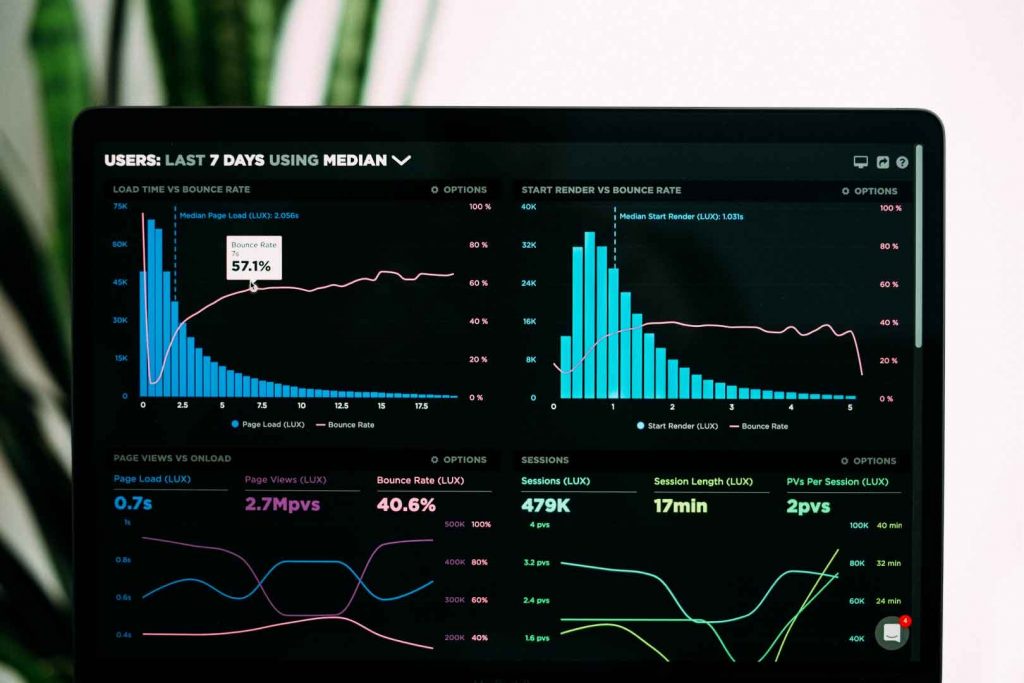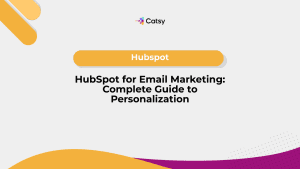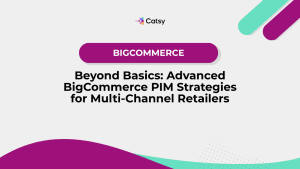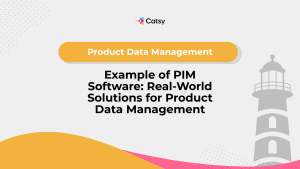PIM, DAM, PXM, PCM, MDM, and more: Sharpen Your Acronym Knowledge

In this Article
What does PIM mean? What’s the difference between PIM and DAM? How are they related to MDM? What is MDM? What do any of them have to do with eCommerce in general and your business specifically?
You’ve probably read about PIM, DAM, MDM, and more. Or you’ve at least seen them used. You may have a fundamental knowledge of a few of them, but, at a minimum, anyone in the eCommerce space needs to know what these acronyms stand for.
But what is PIM and what can it do for your business?
The truth is, the eCommerce space is full of these sometimes overlapping and certainly confusing acronyms. For example, PIM can include DAM functionality and you can understand MDM as an idea that sits over all the others. Thus, while most of these terms refer to technologies and software solutions, at least one is only an idea.
Ultimately, knowing what can these solutions can do for your eCommerce business is more important than knowing only what an acronym like PIM stands for. Further, knowing how they relate to and differ from each other will give you an idea of their often complimentary and sometimes overlapping functionalities.
In this blog we’ll take a deep dive into the meaning behind all of these eCommerce acronyms and more. Only by teasing out both the glaring and subtle differences between them can we answer the following key questions:
- What do these acronyms stand for?
- Are they ideas, software solutions, or something else entirely?
- What do they do and not do?
- How do their functionalities overlap?
- How do their functionalities differ?
Ultimately, because the profitability and expansion of any business are mostly likely to be primary goals, this blog will help you answer the following critical questions:
- Can these ideas and technologies increase my revenue?
- How can I use them to grow my market share?
But before getting into that, let’s get a handle on what the names mean.

What Do the Acronyms Mean?
- CRM: customer relationship management (source)
- DAM: digital asset management (source)
- ERP: enterprise resource planning (source)
- MDM: master data management (source)
- PCM: product content management (source)
- PDM: product data management (source)
- PIM: product information management (source)
- PLM: product lifecycle management (source)
- PXM: product experience management (source)
More important than what these acronyms stand for is a description of what they are. You’ll also need to know what each specifically does to understand how their functionalities compliment, overlap, or differ completely from each other. Finally, understanding what they do will show you what they can do for your business.
Note, while the list above is alphabetical, the descriptions below will run from the larger, umbrella terms to solutions that tackle one highly specific function.
Without further ado, let’s get down to it.

What is MDM?
MDM means master data management. Unlike the other acronyms below, which refer directly to software, MDM is an umbrella term referring to how organizations describe, format, store, access, and utilize all company data. In this way, MDM is more of an idea or elaborate system of processes and protocols, than an individual system.
Also, while part of the data managed under an MDM framework would exist in the eCommerce space, you can understand MDM more correctly as a totalizing term. Therefore, MDM is only useful if it includes all company data, such as internal human resources data and product information, as well as external vendor and customer data.
PIM vs. MDM
All in all, MDM sits above basically all the systems and solutions explained below with the other various acronyms we’ll look at. With specific regard to PIM, the difference between the two is the same. Because MDM refers to “master” data, the information managed by a PIM system represents part of the whole MDM covers.

What is ERP?
Like MDM, ERP, which means enterprise resource planning, is less a single software package than an accumulation of business process management systems. In the past, businesses ran many of their processes with systems that didn’t have the capacity to work together. Today, companies are quickly leaving that practice behind.
As such, a modern ERP solution is one that brings together all of one company’s internal employee information and human resources activity, financial data and reporting, logistics, operations figures, and manufacturing totals.
Key functionalities of an ERP system include:
- Full system integration:
All the pieces of the puzzle communicate seamlessly with each other.
- Real time operation:
Data is recorded as it’s created in real time or almost real time.
- One shared database supporting all individual application modules:
The system is fully integrated for the purpose of recording all company data.
- Look and feel consistency throughout the system:
The individual modules feature the same functionality to facilitate and simplify the user experience.
- IT department installation and maintenance:
The system is managed, and troubleshooting of all problems that arise is handled, by the company internally.
- Can be hosted in-house, on the cloud, or via an SaaS vendor:
Data storage is flexible depending upon how the company chooses to set the system up.
PIM vs. ERP
Finally, with regard to PIM, the scope of an ERP system is far more broad. While PIM is designed to managed product content, an ERP system will record and maintain the following forms of internal and external data:
- Operations and Management
- Human Resources
- Financial/Accounting
- Logistics/Supply Chain
- Project Management
- Manufacturing
- Customer Order Processing
- Client Portals
- Customer Relationship Management (CRM)

What is CRM?
CRM, which stands for customer relationship management, is a software tool for housing all the data a company collects about potential, existing, and former customers. The primary goal of a running a CRM system is to boost customer satisfaction and thereby build customer loyalty, extend business relationship longevity, and increase revenue.
CRMs tend to vary in composition and complexity by the size of the organization they service. Typically, the larger the company, the most clients they need to scout, approach, convert, and manage, requiring a more robust system. Thus, at a bare minimum any CRM is going to built on a database which stores client information and tracks company interaction with them.
PIM vs. CRM
With regard to PIM, the difference is quite simple. Because the practical focus of a CRM system is to manage interactions with clients, CRMs house client data, whereas PIMs house product content. In this way, while your CRM and PIM may be parts of your larger MDM framework or ERP system, they are likely to be quite different.
Even though they both function to store data, the kind of it, the purpose, and even storage of those data will be very different. Finally, while your marketing and sales departments certainly should be communicating and strategizing to ensure growth, your sales department is less likely to use your PIM as your marketing department is to use your CRM, depending of course on your company’s internal structure.

What is PLM?
Just as the acronym reflects, PLM, which means product lifecycle management, is any software application allowing for complete management of all product-related information throughout the process of bringing it to market.
Because PLM is design-focused from the earliest phase of development, it covers product engineering and manufacturing, and manages the workflows that drive productivity and collaboration. The benefit of PLM is the efficiency that flows from eliminating bottle-necks, empowering strategic decisions, and culminating with shorter time-to-market.
PLM software connects people, processes, and data across the entire product lifecycle to a central repository of information. So everyone from the conceptual designer to the end-customer is on the same page, sharing the same up-to-date product definition.
PIM vs. PLM
Because the focus of PIM is optimizing product pages to drive revenue and grow market share, it has nothing to do with engineering or manufacturing. However, PIM and PLM do share some common functionalities. Both manage complex product information, such as precise specifications.
Also, both utilize the workflow function to drive productivity by automating simple tasks and using notifications to drive process completion. But, where PLM is devoted to the development of products, PIM is devoted to the sales of products. Ultimately, you can think of PIM as the system which takes over for PLM, once product marketing begins.

What is PIM?
PIM, which means product information management, is an eCommerce software solution. PIM allows you to create a single source of product content truth. Once centralized, this truth can be optimized to ensure the kind of product page richness, accuracy, and completeness that drives conversions.
The heart of success in eCommerce comes in delighting customers and driving conversions. This is done by presenting customers with product pages optimized to give them the information they need to make strong, informed buying decisions. PIM ensures your product content, meaning information as well as rich, compelling digital assets like 360-degree images, informative videos, and CAD drawings, is always accurate and up-to-date.
PIM also includes functionality for syndicating your now enriched product content, ensuring it meets requirements across sales channels. Regardless if you are selling on a large eCommerce marketplace like Amazon, a specialty retail website like Home Depot, right down to your company’s own direct-to-consumer (D2C) site, PIM syndicates data correctly every time.
This process begins with implementation, when the full range of your product information, images, videos, and everything else that brings value to your product pages is organized. Products are directly linked to the information that informs customers about them, and the digital assets that empower buyers to convert. The implementation process ensures your data is clean upon entry, while PIM is specifically designed to ensure it stays that way.
PIM also utilizes workflow functionality to maximize productivity of your internal teams. Because new product roll out requires centralizing information from multiple teams, communication and collaboration are key for success. PIM uses reminders and automated task completion to keep teams productive and working together.

What is PCM?
PCM stands for product content management. Because product content is literally the combination of product information and digital assets managed by a DAM, PCM has largely been used as a less popular alternative to the term PIM.
Some companies and service providers have sought to use the term PCM to carve a niche out of the PIM marketplace for themselves. Such services often include extra bells and whistles that can be customized to client specifications. However, the core of any such system is going to be a PIM with DAM functionality, because that’s what product content management is.
PIM vs. PCM
For all intents and purposes there is no functional difference between PIM and PCM, outside of the acronyms themselves. You could argue that content is a more totalizing word than information, as content includes digital assets. However, PIM has already become the virtual industry standard term for the kind of system both acronyms describe.
Furthermore, as discussed above, PIM systems should incorporate the DAM functionality that manages your digital assets, as a matter of course. Thus, while PCM may automatically describe a PIM system with DAM functionality, standard industry expectation and practice are already moving in that direction with regard to PIM anyway.
Finally, a simple Google search of PIM and PCM is enough to demonstrate the fact that PIM is the acronym of choice for a system that centralizes, optimizes, and syndicates product content for eCommerce.

What is PXM?
PXM, product experience management, is another way of discussing the functionalities inherent to a PIM system. Like PIM, PXM facilitates management of product information and digital assets. PXM also allows for the optimization of content and its syndication across multiple sales channels.
PIM vs. PXM
Like PCM above, PXM is little more than a new buzzword in the eCommerce space that describes a software solution more commonly referred to with the acronym PIM. While PXM focuses on the experience your product content provides to prospective customers, there is little if any functional difference between the two.
Just like any solid PIM system, a PXM system is going to provide you with the means to bring your product information and digital assets together to create a single source of truth. You can then optimize that product content by sales channel and syndicate it to drive conversions. Thus, PXM is another way of saying PIM with DAM functionality, which is basically what PIM means anyway.

What is PDM?
Product data management (PDM) involves managing and syndicating product data, meaning product information, and other information about internal processes with one software system. PDM is basically a central database for all the information collected about a product during its development and manufacturing.
PIM vs. PDM (vs. PLM)
Like a PIM system, the information managed by a PDM solution includes technical information and schematics like CAD drawings. These provide precise data about the products a company produces and the individual parts that make up those products.
Unlike a PIM, a PDM system is specially tasked with the management of design, engineering, and manufacturing data. As such, a PDM system is far more closely related to a PLM system than a PIM. While your PLM system collects and manages product data through the development phase, PDM is responsible for managing and syndicating data after collection.

What is DAM?
DAM, which stands for digital asset management, can be a stand alone system. But it tends to function much more robustly as an incorporated piece of functionality inside a PIM system. The digital assets DAM manages include images, videos, CAD drawings, audio files, graphics, and documents.
Thus, DAM ideally encapsulates a modular software solution for centralizing your digital assets. Thus, you can search for them with metadata. DAM also manages and syndicates these files, all of which add value to your eCommerce operation product pages. They do this by helping you convert customers and drive sales revenue.
DAM functionality allows you to describe all assets with attached metadata. You can then use this functionality to make searching for the exact image or video you need a snap. Further, this metadata can include keywords critical to driving your operation’s SEO strategy. This allows you to start working on your SEO strategy from PIM implementation. This also ensures the widest possible coverage of keywords and terms connected directly to the digital assets you use to sell on your product pages.
PIM vs. DAM
Some DAM solutions have been augmented or modified to work like a PIM. But the best solution is a PIM that incorporates full DAM functionality. Your product information speaks to your product images. Those images are more or less meaningless without the specifics product information provide, right? So why do so many companies still house these crucial categories of data separately?
PIM, with DAM functionality, stores all of your product content in one central repository. When you directly connect product information and digital assets, optimizing product pages to ensure conversions becomes the work of hours and days, not weeks and months. This is the only way to create the single source of product content truth you need to maximize revenue and grow market share.

Full Integration
The ideas and technologies the acronyms discussed above bring a wide range of functionalities to the table. Depending upon the nature of your business and the products you sell, it’s likely your company will benefit from some custom combination of these.
Most importantly, when opting for a system to increase productivity, generate more revenue, and grow your business into the future, don’t think about what you could have. Instead, invest in what you need.
If you’re trying to maximize sales across the full range of your sales platforms, it’s likely that a PIM system with DAM functionality, is going to be your best bet. The key is to partner with a company with the experience and expertise to drive implementation success.
A PIM is only as good as its implementation.
Finally, you’re also going to want to opt for a company with a strong reputation for excellent customer service. You’re just getting into the market for a PIM, but a strong PIM provider is the one that’s been in the business for years. The longer your PIM vendor has been selling their product, the more they bring to the table for you to learn from their past successes.
Now that you know what PIM means, how it differs from other acronyms in the eCommerce space, and how it specifically can benefit your operation , click here to see what Catsy can do for you today
Product information management (PIM) is a catalog software tool built to speed products to market.
Digital asset management (DAM) is a software used to organize and enrich digital assets.




